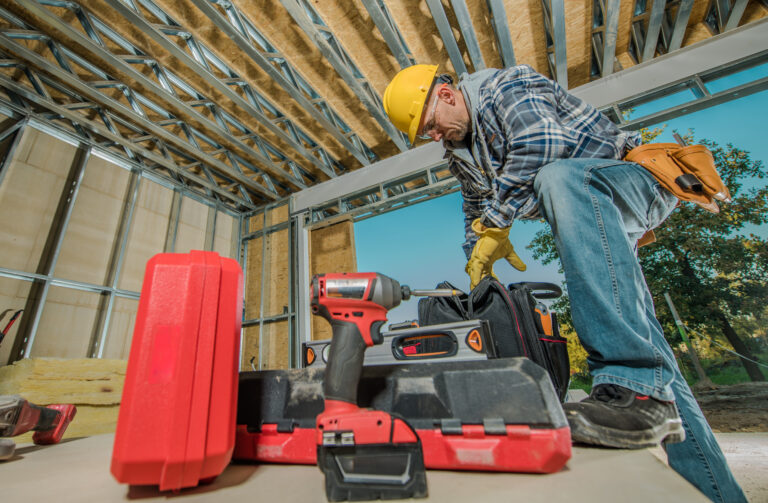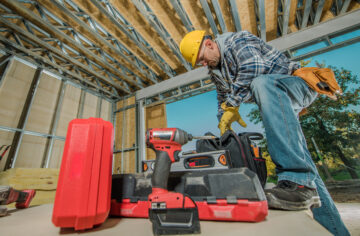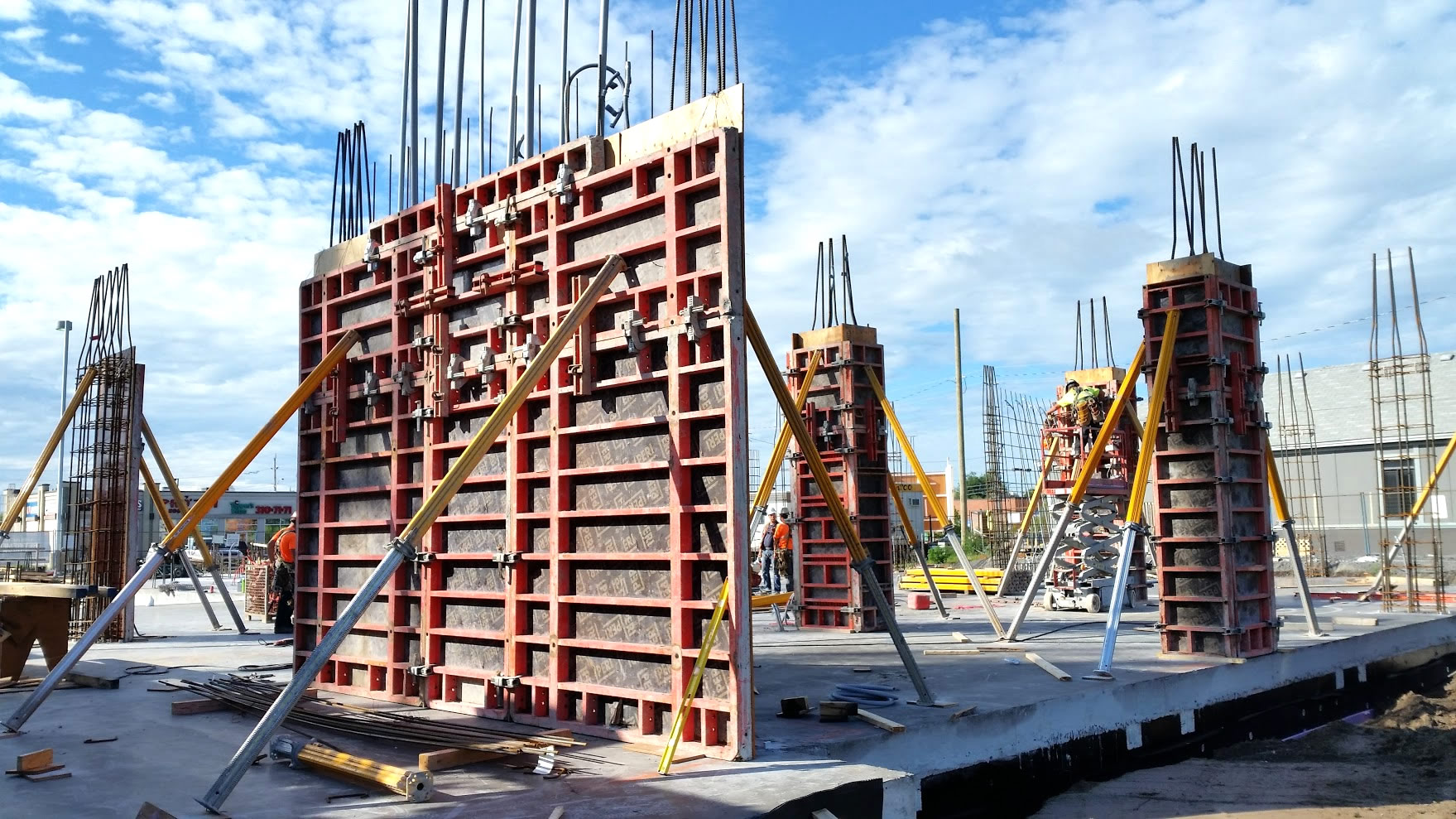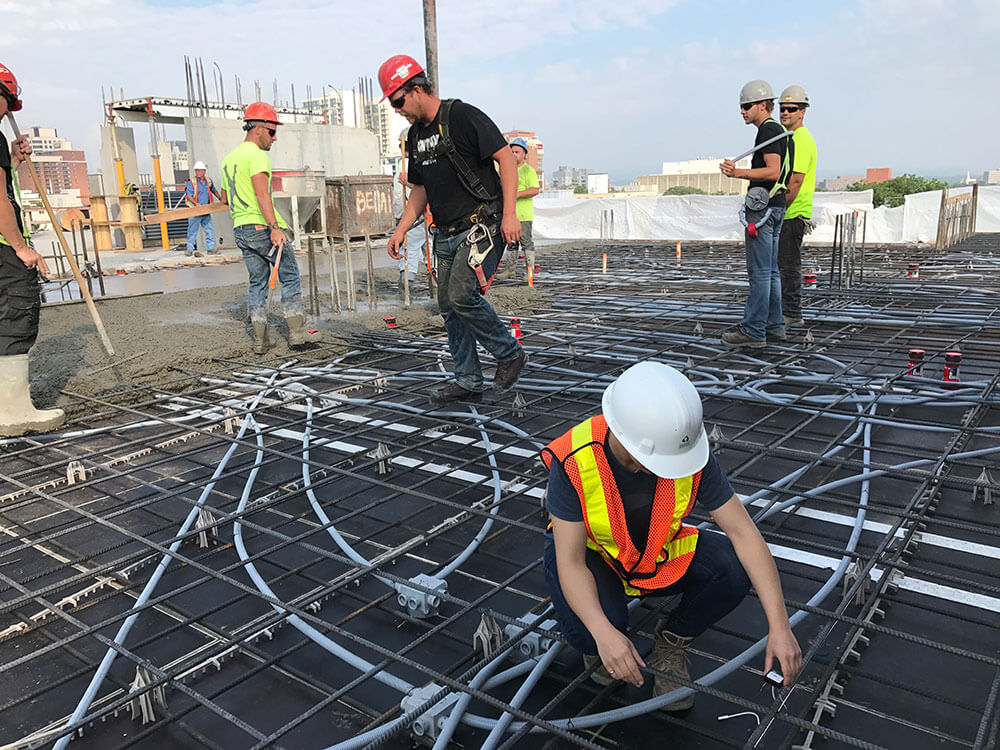Construction sites are powered by technology that drives efficiency, protects workers, and reduces environmental impact. Contractors are moving past traditional methods and turning to smart, connected tools that help them stay on schedule, improve accuracy, and meet rising sustainability demands. Choosing the right equipment has become a direct path to stronger results and safer jobsites.
Big Projects Deserve Better Protection
Tools are now treated as critical assets that influence every project stage. Companies are investing in advanced machinery, mobile applications that improve coordination, and digital marketplaces that make sourcing equipment faster and more cost-effective. These solutions bring together productivity, protection, and accountability in ways the industry couldn’t have achieved a decade ago. In this blog, we examine the latest trends in construction tools and their impact on modern projects.
Cordless vs. Corded: Flexibility Meets Productivity
Construction tools come in two main types: corded and cordless. Each has strengths and trade-offs in power, runtime, ergonomics, and maintenance. Understanding these differences helps contractors maximize productivity, safety, and jobsite efficiency. Most professionals use both, but as battery technology improves and costs drop, cordless tools are increasingly the smart choice.
Technical Performance: Power, Torque, and Speed
Modern cordless tools now rival corded models in power, torque, and speed, with high-density lithium-ion batteries and brushless motors. They offer features like kickback control and smart modes, though corded tools still excel in sustained heavy-duty tasks. Runtime is the main trade-off: corded tools run indefinitely, while battery life depends on pack capacity, but fast chargers and spare batteries mitigate downtime. Cordless tools are often lighter and more ergonomic, giving crews added flexibility.
Jobsite Performance and Real-World Scenarios
On active jobsites, whether commercial buildings or large infrastructure projects, the differences between corded and cordless tools affect both productivity and safety. Cordless tools enhance mobility and safety, eliminating the need for extension cords or generators and reducing trip hazards. They allow workers to operate in remote or elevated locations, confined spaces, or large sites like highways and campuses. Modern cordless equipment, including SDS-Max rotary hammers, miter saws, angle grinders, and handheld core drills, can handle most tasks once reserved for corded tools. Corded tools remain valuable for continuous, all-day operations, with batteries rotated or corded backups used as needed.
Market Adoption and Contractor Preferences
Cordless adoption is rising across consumer and professional markets. A recent survey found 29% of consumers purchased a cordless tool in the past year versus 20% for corded. Globally, the cordless market reached $12B in 2024, expected to double by the mid-2030s. Contractors value platform-based batteries, productivity gains, energy savings, reduced maintenance, and improved safety, outweighing higher upfront costs ($200–$300 for cordless vs. By 2025, cordless tools are widely trusted for heavy-duty construction tasks, driving manufacturers to continually enhance power, runtime, and reliability.
Choosing Corded vs. Cordless: Best Use Cases and Recommendations
Both corded and cordless tools have a place in a construction executive’s toolkit. The right choice depends on the task, jobsite conditions, and priorities.
When Corded Tools Are Preferred
- Continuous, High-Power Tasks: Tools that run non-stop for hours, like mixing large batches of concrete or sanding, benefit from corded power with no battery swaps.
- Stationary Workshops or Prefabrication: Benchtop or fixed-location tools are cost-effective and don’t require portability.
- Peak Speed or Torque Needs: For drilling very hard concrete or using high-power demolition hammers, corded tools provide consistent RPM and torque.
- Cost-Sensitive or Occasional Use: Tools used infrequently avoid the expense of batteries and chargers.

When Cordless Tools Are Preferred
- Highly Mobile or Scattered Work: On large sites, cordless tools let crews move freely, improving efficiency for framers, electricians, and plumbers.
- Remote or Off-Grid Locations: Battery tools remove the need for generators or extension cords, saving time, fuel, and avoiding noise and fumes.
- Work at Height or Confined Spaces: Ladders, attics, and crawlspaces are safer without cords.
- Occupied Spaces and Renovations: Quick tasks in finished buildings avoid trip hazards and disruption.
- Multi-Tool Flexibility: Shared battery platforms let workers switch between drills, saws, and rotary hammers seamlessly.
- Safety and Compliance: Low-voltage cordless tools reduce shock risk, prevent cord-related accidents, and meet regulations in sensitive environments.
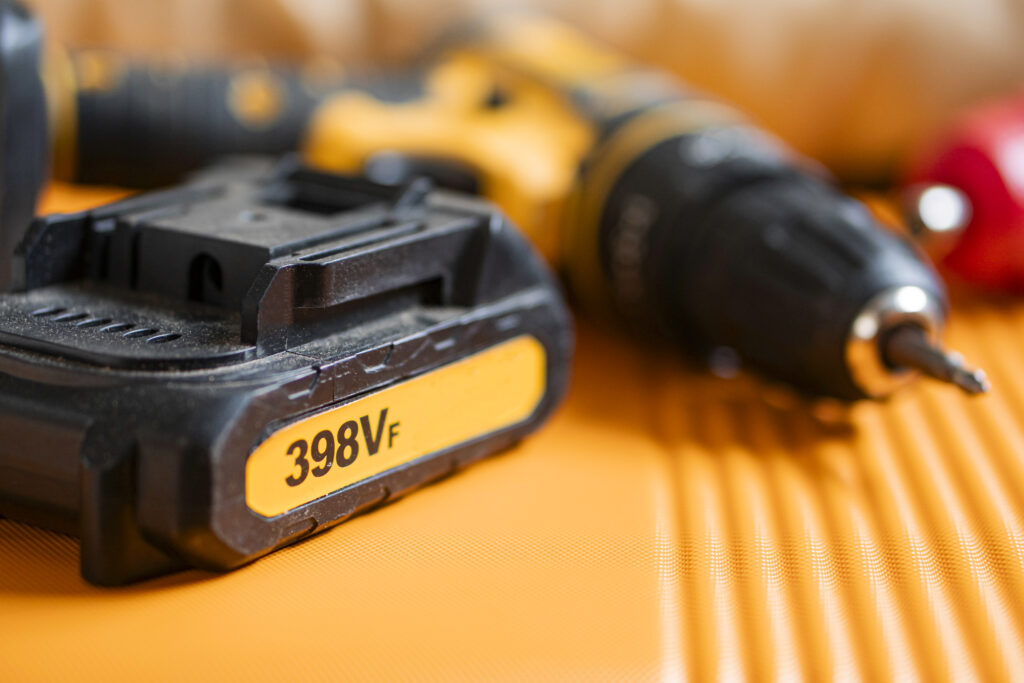
In practice, many contractors maintain a mostly cordless fleet, supplementing with a few corded tools for high-duty tasks. Battery platforms now cover heavy equipment, making near 100% cordless jobsites feasible for many projects. Executives often choose cordless because the combination of productivity, flexibility, worker satisfaction, and safety outweighs battery costs, a trend that continues as performance improves and prices decline.
Big Projects Deserve Better Protection
Best Practices for Choosing Corded vs Cordless Tools
When deciding between corded and cordless tools, contractors consider multiple factors beyond upfront cost. Task type, jobsite conditions, runtime, mobility, safety, ergonomics, and maintenance all influence the right choice. Let’s take a look at the table below to compare the strengths and ideal scenarios for each type, helping construction executives make informed fleet decisions.
Side-by-Side Comparison
| Factor | Corded Tools | Cordless Tools | Notes / Best Practices |
| Power & Torque | Unlimited, steady power; excels in continuous heavy-duty tasks | High torque thanks to brushless motors and lithium-ion batteries; some cordless drills exceed corded torque | Cordless tools now rival corded power for most jobs, but corded tools still excel in sustained high-load applications like hammer-drilling concrete |
| Top Speed | Higher RPM sustained over long periods | Matches corded for most tasks; may taper under extreme loads | Corded tools provide consistent speed; cordless tools are improving as battery tech advances |
| Runtime | Effectively infinite as long as plugged in | Limited by battery capacity; lithium-ion batteries provide longer runtime | Use multiple batteries or rapid chargers for all-day use; high-density batteries are closing the gap |
| Maintenance & Longevity | Mechanically simple; occasional brush changes; minimal upkeep | Brushless motors reduce wear; lithium-ion batteries are consumable and may require replacement (3–5 years) | Corded tools generally have lower long-term costs; cordless tools require battery care, storage, and electronics maintenance |
| Weight & Ergonomics | No added weight; tethered to power source | Batteries add weight but enhance mobility; modern designs can be lighter than some corded tools | Battery size can be chosen strategically: compact for light tasks, high amp-hour for heavy use |
| Safety | Good electrical safety when used properly, but cords introduce hazards: tripping risks, potential for cord cuts or electric shock if insulation is damaged. | Durable, low operating cost; minimal consumables; productivity can be affected by cord management. | Cordless tools are safer on mobile worksites; corded tools are safe if cords are well-managed |
| Best Use Cases | Continuous, high-power jobs; workshops or fixed locations | Mobile jobsites; elevated or confined spaces; fast-paced tasks | Most contractors adopt a hybrid approach to balance mobility, productivity, and runtime needs |
| Cost & ROI | Durable, low operating cost; minimal consumables; productivity can be affected by cord management. | Higher initial cost; ROI comes from labor savings, faster work, improved safety | Consider total cost of ownership including battery replacements for cordless tools |
In summary, cordless tools have become the go-to choice for most construction applications, combining professional-grade performance with unmatched mobility, safety, and smart technology. Corded tools remain relevant but are now niche solutions, best suited for continuous, high-power tasks or cost-sensitive scenarios. For executives planning tool fleets, prioritizing a comprehensive cordless platform ensures greater productivity, flexibility, and future readiness, while maintaining a small selection of corded units for specialized needs. As battery technology continues to advance, offering more power, longer runtimes, and lower costs, the role of corded tools will continue to shrink, making a well-planned cordless ecosystem a strategic investment.
The Future of Cordless Construction Tools: Driving Jobsite Safety and Efficiency
As digital adoption accelerates in construction, a new generation of cordless, smart tools is emerging; tools that are not only improving how work gets done, but also making jobsites safer, cleaner, and more efficient. Let’s review the technological trends that are shaping this shift.
Smarter Jobsites Through AI and Connected Tools
Leading builders are investing in digital tools that connect the entire project ecosystem. AI and cloud platforms are now daily aids, helping firms analyze project data, predict risks, and automate planning. Companies using AI report improved visibility, faster decisions, and higher bid win rates. Tools like Giatec SmartMix™ leverage AI to optimize concrete mixes in real time, reducing waste, ensuring quality, and helping managers prevent costly overruns.
On jobsites, managing thousands of construction tools and equipment across large projects is a constant challenge. That’s why digital tracking and maintenance platforms are becoming essential. Drones now handle surveys, inspections, and progress tracking, while BIM integration enables detailed 3D mapping and reduces costly rework. IoT sensors like Giatec SmartRock® monitor concrete curing remotely, ensuring quality and streamlining schedules. Even tool and equipment management is getting smarter: cloud dashboards and trackers monitor usage, prevent losses, and schedule maintenance before downtime happens.
Discover how Tomlinson Ready Mix achieved an 8.8% reduction in cement content and a 5% cost savings through SmartMix. Read the case study here!
Sustainable and Eco-Friendly Construction Tools
Sustainability has become a real priority on modern construction sites. Contractors are adopting electric and hybrid machinery, like Volvo’s electric excavators and Bobcat’s T7X loader, to cut emissions, reduce noise, and maintain productivity. Alternative fuels such as renewable diesel and hydrogen generators provide clean off-grid power.
Material waste reduction, especially in concrete, is another focus. Overdesigning mixes leads to excess cement, a major source of CO₂ emissions. Smart concrete sensors and AI mix optimization like SmartMix, allow contractors to use only the cement needed for strength, avoiding waste. This reduces emissions and material costs, aligning sustainability with profitability.
Safety-First Tools for a Proactive Jobsite
Safety remains a top priority on large projects, and contractors are adopting high-tech tools to achieve near-zero incidents. Wearables monitor vibration, impacts, and exposure to hazards, alerting workers and providing managers with real-time analytics to proactively rotate crews or adjust processes.
Proximity detection systems on heavy equipment, warn operators and workers when someone enters a machine’s path, reducing collisions and near-miss incidents. Drones and remote inspection tools capture detailed images of high or hard-to-reach areas, keeping workers out of risky positions. Cloud-based platforms track hazards, assign corrective actions, and use AI video analytics to flag missing PPE or restricted-zone entry. Together, these technologies shift safety from reactive to proactive, protecting crews while minimizing delays and costs.
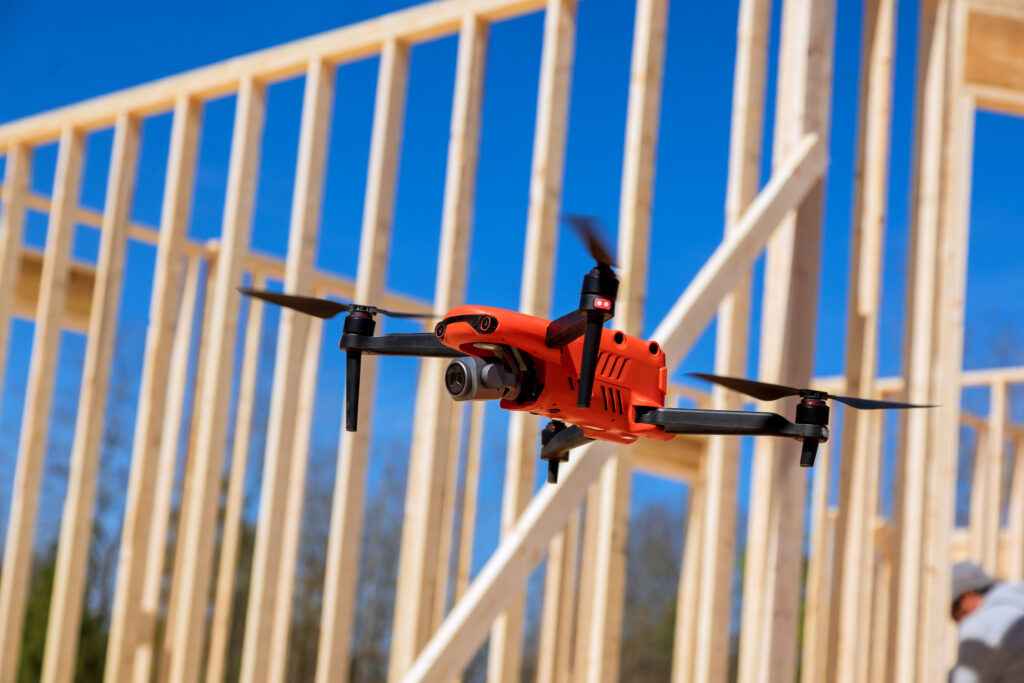
Robotics and Automation: The Next Frontier
Robotics and automation are transforming construction sites. Autonomous and semi-autonomous machines take on repetitive, strenuous, or hazardous tasks, such as Boston Dynamics’ Spot robots for site scanning, rebar-tying robots, and autonomous layout machines. Canvas’ drywall-finishing robots on a California project improved quality, reduced dust exposure, and sped up work. The Netflix House project also used robots for painting and finishing, showing efficiency gains in interior work.
Automation goes beyond robots. GPS-guided earthmoving equipment achieves precise grading faster, semi-autonomous haul trucks follow preset routes, drones automate surveying, and RPA software handles administrative tasks like invoice processing. These technologies increase productivity, reduce risk, and help projects run smoothly- and faster.
Conclusion
From cordless and corded construction tools to digital platforms, AI, sensors, and robotics, modern construction teams now have the technology to boost productivity, safety, and sustainability. Tools like SmartMix™ and SmartRock® demonstrate how real-time monitoring and data-driven insights can reduce waste, lower carbon emissions, and streamline workflows. Wearable safety technology, drones, and robotics also help teams reduce risk while maintaining quality.
Want to improve jobsite efficiency with advanced construction tools? Learn more about effective construction solutions here!

